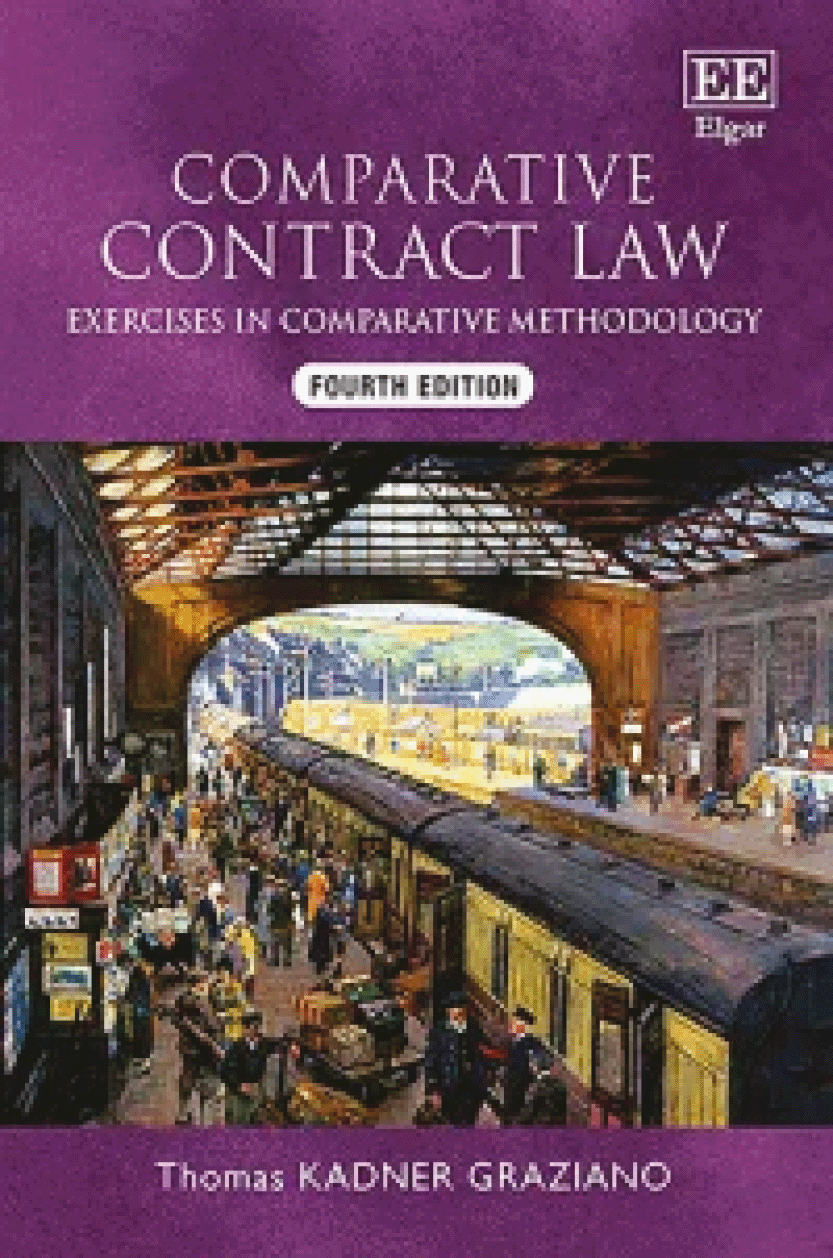
Comparative Contract Law: Exercises in Comparative Methodology (4th edition)
Thomas Kadner Graziano
£48.95, Edward Elgar
Reading this edition has been both intellectually rewarding and practically useful. It updates earlier material, thus strengthening the book’s reputation as an excellent resource to use in comparative law. The author’s approach of ‘learning-by-doing’ really does make complex issues more approachable, especially for those of us who want to see how abstract principles play out in practice.
The book’s structure is easy to follow. Part A sets the stage by explaining the basics of comparative methodology and why it matters. Part B takes readers into a series of case studies that are not dry and hypothetical but scenarios that feel realistic. These are followed by guided questions, which push the reader to think through possible solutions across different jurisdictions.
Many of the questions were thought-provoking and I struggled to answer some myself. I could then consult the actual legal sources, including statutes, judgments and even transnational instruments. This created a genuine problem-solving experience.
Another highlight was the sheer breadth of jurisdictions covered. Graziano includes materials from around 30 countries, including the original language alongside English translations. I found this dual presentation particularly valuable. It gave a taste of the authentic legal language without excluding those of us who may not read every legal system’s tongue fluently. The author also gave attention to smaller jurisdictions, not just the usual big civil law and common law players.
The inclusion of Belgium’s Civil Code is a reminder that contract law is evolving globally and that any serious comparative lawyer should keep an eye on developments within Europe as well as outside.
In terms of improvements, this edition offers short introductions to each country’s legal history and system when they first appear. When I first saw the book, I found these to be overwhelming. However, as I read on, I found these concise overviews extremely helpful, because they gave me just enough background to understand the context.
As someone who is interested in different perspectives, I would suggest the addition of further perspectives from outside Europe, particularly from Australia and New Zealand, where important decisions have also reshaped the law on penalties. Their inclusion would make the comparison even richer. But that is a minor point with regard to what is otherwise an outstanding volume.
This book is accessible enough for students but sophisticated enough for scholars and practitioners.
Zainab Zaeem is associate director/ solicitor at Summerfield Browne Solicitors































No comments yet